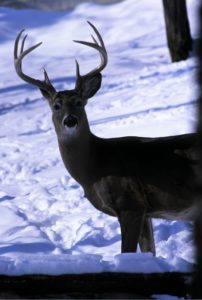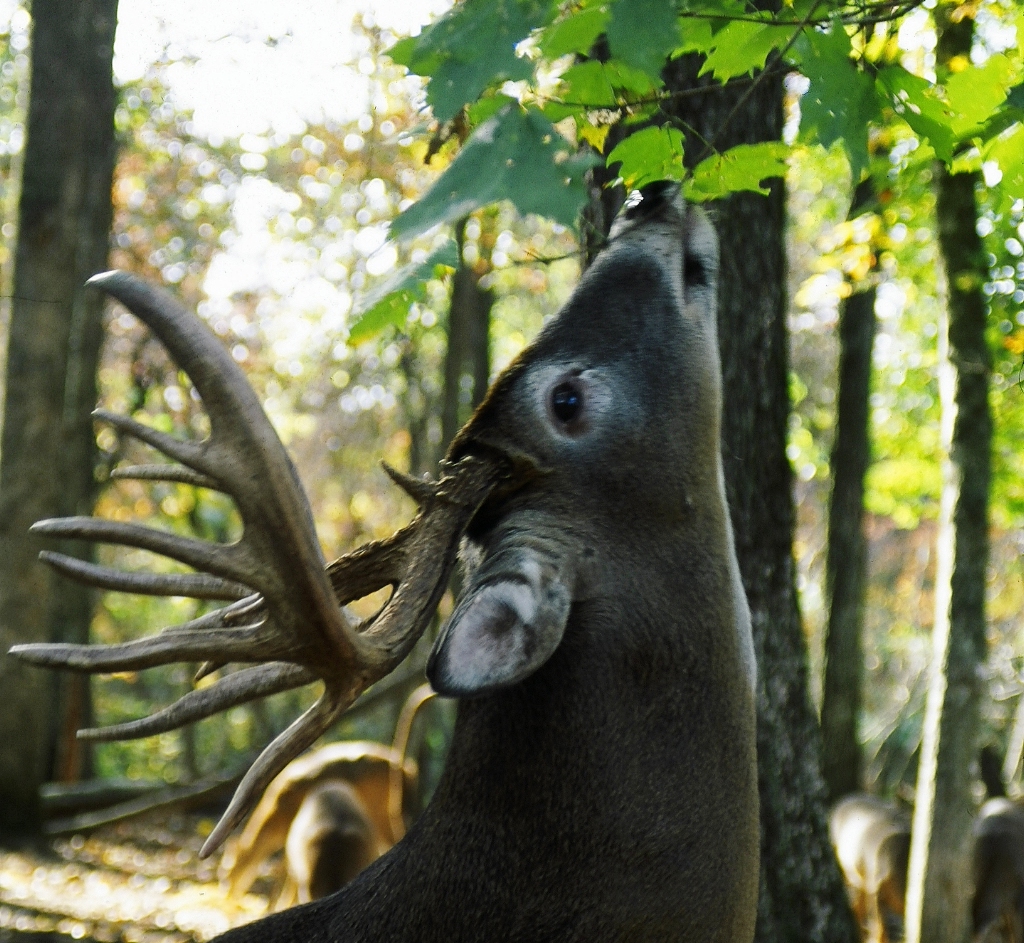The best time to shoot at a whitetail deer is when it’s relaxed and has no idea that danger is near. Once a deer is alarmed, every muscle in its body resorts to “escape” and the slightest sound or movement can cause flight. Often deer “duck” as they whirl and run away, causing an arrow to fly over its back, a phenom known as “jumping the string.”
How Well Can they See?
Deer have incredible eyesight and have the ability to look for danger even when their heads are down in a feeding situation. As humans, our vision is basically side-to-side, about 180 degrees including our peripheral vision. However, the vision of a whitetail deer is much greater as you will see in this post from the Grandview Outdoors Website.
Take Action
 As a bowhunter, you can take specific actions to outwit the vision of a whitetail. Last season I was hunting with a crossbow while sitting against a large tree. The area was so thick that deer didn’t pick me out until they stepped into a two-foot wide shooting lane that extended out to 30 yards. I learned this from a doe and fawn that passed by early in the morning.
As a bowhunter, you can take specific actions to outwit the vision of a whitetail. Last season I was hunting with a crossbow while sitting against a large tree. The area was so thick that deer didn’t pick me out until they stepped into a two-foot wide shooting lane that extended out to 30 yards. I learned this from a doe and fawn that passed by early in the morning.
Later a big buck came sniffing the ground, searching for estrous scent. Once I saw the buck, I immediately raised the bow and followed it’s shoulder through the thickets. As it stepped into the shooting lane, I shot. Had I waited to aim until the deer was in the open, it probably would have seen me.
How Long Can you Hold
As a compound archer, you should practice seeing how long you can hold your bow at full draw and still shoot accurately. It’s probably longer than you think. Denny Steiner had the shot of a lifetime at a Cape buffalo in South Africa this summer. Hunting from the ground a herd of buffalo moved toward him and he had to hold his 72-pound bow for six minutes at full draw before releasing.
All About Deer Sight
Learning about whitetail deer is interesting and will make you a better hunting. Here’s the science behind deer sight.









![The Best Deer Camp Chili [VIDEO] Deer Chili Ingredients, Tomatoes, Chili Spices](/wp-content/uploads/2015/10/Deer-Chili-Deer-Camp-Recipe-218x150.jpg)








![How to Call Elk Early in the Season [VIDEO]](/wp-content/uploads/2016/08/byers003-218x150.jpg)




![Idiots Disturb Hunter: How Would You Have Handled It? [VIDEO]](/wp-content/uploads/2015/10/DSC00110-e1474487693878-100x70.jpg)
![Albino Buck Shocked to Shed His Antlers [VIDEO]](/wp-content/uploads/2015/10/AlbinoDeer-100x70.jpg)